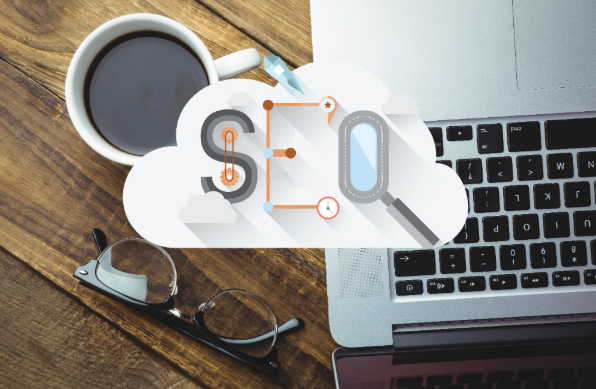Leveraging IoT Solutions to Create Smarter and Connected Living Environments

The era of passive objects has faded into obscurity in today’s world. Now, every facet of our lives, from automobiles to household appliances, is infused with technology and digital intelligence.
Challenges often multiply with each passing day amidst the perpetual advent of modern urban centers. Here, IoT solutions stand out and offer an array of transformative potential for growth. Facilitating smart and interconnected infrastructure is one of its crucial contributions.
Through the integration of sensors into buildings, roads, and utilities, cities can efficiently manage energy consumption, track air quality, and promptly identify maintenance issues in real time. In fact, IoT technology could slash city energy consumption by up to 30% and reduce greenhouse gas emissions by 25%.
IoT solutions have become the architects of a new era where,
Industries are reshaped.
Interactions with the world are revolutionized.
Businesses, too, stand to benefit immensely.
IoT Solutions Empowering Businesses in Creating Smart, Connected Environments
Recent findings reveal that the market value for IoT in smart cities is indicating a surge to $931.5 billion by 2032. The number clearly reflects a remarkable compound annual growth rate (CAGR) of 20.5% from 2023 to 2032.
This escalation in market share is fueled by the growing call for streamlined city operations and the imperative for sustainable environmental advancement.
Here is how IoT solutions can create an efficient, resilient environment and business benefits.
1. Efficiency Through Data Exchange and Processing
Imagine a commercial business with an advanced IoT-enabled energy management system. By utilizing the system seamlessly, the business can integrate with existing infrastructure to collect and analyze data on energy consumption, operational efficiency, and resource utilization.
Moreover, IoT-driven insights can make data-driven decisions that drive revenue growth. By analyzing data from interconnected devices and systems, It is possible to identify new business opportunities, optimize supply chain management, and enhance customer experiences.
Also, IoT-enabled inventory management systems can provide real-time visibility into stock levels, enabling businesses to minimize stockouts and improve inventory turnover rates.
This is how businesses can use IoT solutions as a pathway towards operational excellence and sustainable growth.
2. Elevating Comfort and Efficiency
At the forefront of the IoT revolution is smart infrastructure, equipped with interconnected devices that communicate and collaborate to enhance comfort, convenience, and efficiency.
Let’s consider the manufacturing environment. It is quite visible that businesses are increasingly turning to IoT-driven security solutions to fortify asset protection and uphold seamless operations in a manufacturing environment.
Through an integrated network of cameras, motion sensors, and smart access control systems, all managed via a centralized platform, companies bolster their security posture and initiate a smart as well as connected environment.
In case of any suspicious activity, the system promptly alerts security personnel, enabling swift intervention and resolution of security breaches.
This proactive stance not only shields critical assets but also mitigates operational interruptions and ensures adherence to regulatory standards, fostering a secure and compliant operating environment, which can also facilitate sustained business growth.
3. Automation in Crafting Smart Infrastructure
Gartner predicts that by 2025, there will be a 30% increase in operating efficiency as half of cloud data centers will deploy robots with AI and ML capabilities, further enhancing the significance of automating tasks and adapting to user preferences dynamically.
IoT empowers automation and intelligent decision-making within smart homes. By harnessing data from interconnected devices and sensors, IoT allows smart homes to automate mundane tasks and make informed decisions according to preset rules or user preferences.
For instance, in an industrial warehouse, IoT sensors detect occupancy within specific zones and adjust lighting levels accordingly to optimize energy usage.
Similarly, intelligent HVAC systems utilize occupancy data and external environmental factors to dynamically regulate temperature settings, ensuring energy efficiency while preserving worker comfort.
This is how these automated processes not only streamline operations but also align with sustainability objectives by reducing energy consumption and minimizing environmental impact.
4. IoT Bringing Eco-Innovation and Public Service
Smart cities represent a paradigm shift in urban development, leveraging efficient technologies to enhance sustainability and improve public services.
IoT technologies play a crucial role in promoting sustainability within living environments.
Businesses actively using IoT solutions, can experience more connected and sustainable infrastructure, leading to enhanced eco-innovation and growth.
By strategically deploying sensors and monitoring systems across the urban landscape, businesses can gather real-time data on various aspects such as energy consumption, water usage, and waste production. This data provides valuable insights that enable enterprises to identify inefficiencies, optimize resource utilization, and minimize environmental impact.
Whether through smart energy management solutions for commercial buildings or connected transportation systems for urban mobility, IoT technologies pave the way for innovative business models that drive growth and success in today’s competitive landscape.
The Future Outlook
As the demand for intelligent infrastructure surges, the influence of IoT in urban development is poised for further expansion. From conception to execution and ongoing management, IoT technology is fundamentally altering the blueprint of cities. By leveraging the fusion of data and connectivity, urban landscapes stand to achieve heightened sustainability, efficiency, and overall quality of life for their inhabitants.
The integration of IoT solutions within urban development across diverse business landscapes offers an array of advantages spanning from heightened efficiency to bolstered sustainability. As urban centers evolve and expand, IoT emerges as a crucial force propelling innovation and fostering the creation of smart, interconnected urban ecosystems poised for the challenges of tomorrow.

6 Tips To Unlock New Business Opportunities With My Aged Care Registration

The Hidden Business Power of Storytelling Through Books

Diamond Painting Apps & Digital Tools for 2025 Artists

Accelerating drug discovery through the DEL-ML-CS approach

AI in Marketing Is No Longer a Buzzword — It’s the Strategy
Fix GB WhatsApp Ban 2025 – Safe Usage Tips & Best Practices

Why a Shockproof Cover Is Your Best Defense Against Cracks

Benefits of Working with a Bathroom Remodeling SEO Company








